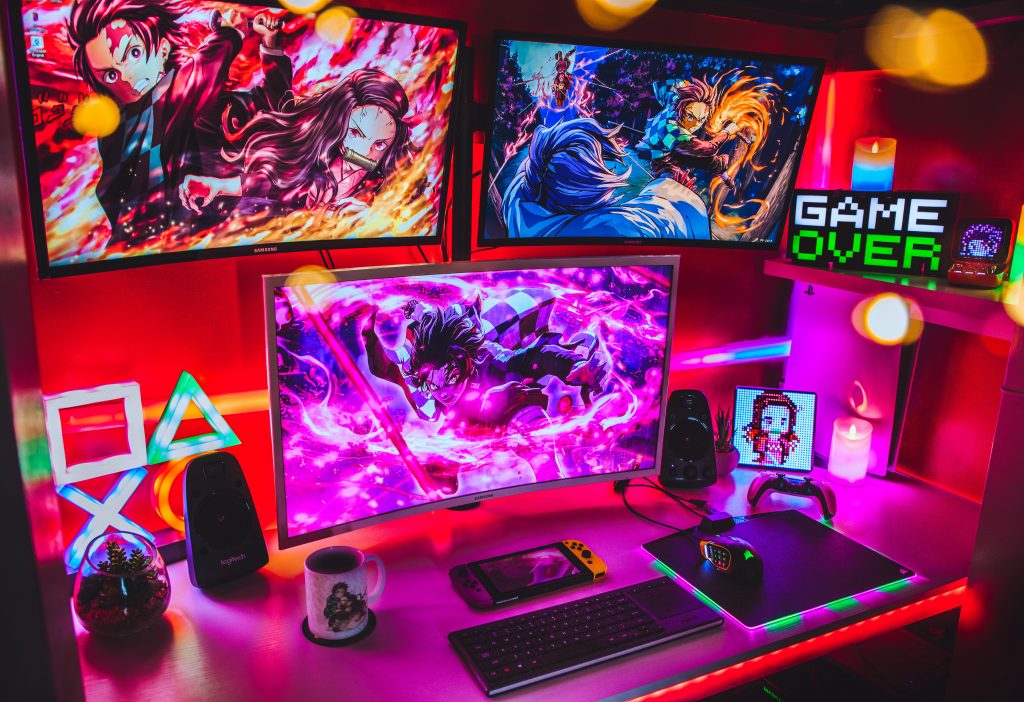When we talk about blockchain games we are actually talking about games on blockchain technology.
It is the same technology on which cryptocurrency transactions are based, and is characterized by a chain of data blocks linked by cryptography. It is a system in which a record of a digital event is publicly distributed, transparent and immutable.

The application of Blockchain technology in games can be broader than the concept of trading. The decentralized nature of the blockchain may thus lead us to a future where cheating in online multiplayer games is virtually impossible.
But for game publishers, blockchain technology is by far the most appealing through the idea of monetizing digital content. When game publishers say blockchain games are the future, they actually believe in the future with even higher earnings.
This is where NFTs come into play – non fungible tokens that, like cryptocurrencies, are based on blockchain technology.
NFT and gaming
NFTs are digital content that have their own certificate of ownership. It can be anything digital, from a picture or sound recording to a set of textures that form a costume in a game. Even this article can be an non fungible token. You can copy it, but you cannot copy the certificate of ownership.
Of course, this ownership alone is not worth much in the digital world where everything can be easily copied, but NFTs in games are based on the idea of digital scarcity.

In translation, the value of some digital content grows the rarer the content is, i.e. ownership of it can be charged more the more demanded / desirable that digital content is. And the higher the value of the content, the higher the commission charged for the transaction costs.
For game publishers, this looks like a jackpot because a commission is taken for each transaction, both the first and each subsequent one. And they can determine for themselves how unique, rare and desirable something will be in their game.
What does an artist do in the gaming industry?
The fascinating world of video games raises the question of who makes such realistic worlds and in what way.
The so-called game artist is a person who creates two-dimensional and three-dimensional models for the needs of video games. The work of artists in the game industry is the design of visual elements such as characters, racing cars, scenography, backgrounds and other objects, as well as colors and textures.
Basically, it could be said that the game artist is in charge of the appearance of the video game.

After the gameplay, the look of the video game is another crucial factor in its success. While some games tend to be realistic, others prefer a highly stylized look.
Depending on the choice of the creative team, the game artist models and defines the textures of the elements to fit the vision of the look.
Artists in the gaming industry are most often graphic artists with a focus on video games.
Their job is to devise what certain characters and objects will look like, and then sketch a preliminary design.
They then develop the blueprints into shapes that will match the imagined atmosphere, and then turn the selected sketches into 2D and 3D computer graphics.
Some designers even use an avatar creator to help players personalize their characters with a variety of customization options.
This level of detail allows for greater immersion, making the gaming experience more engaging and visually compelling.
Types of artists in the gaming industry
In general, artists in the video game industry occupy various positions – they depend on their duties and skills. Several subcategories of gaming artists can be defined:
Conceptualists
Concept art is an occupation closest to the traditional understanding of applied art. These artists most often prefer paper and pen than computer software. Their job is to sketch ideas for the worlds of video games, characters, objects, vehicles, furniture, wardrobe, etc.
Although they are not involved in the realization of the video game, their concepts help shape the look of the game because it all starts with their solutions.
3d Modelers
They put into action the ideas that conceptualists produce. The realization of the appearance of the characters, objects and exteriors of the video game, including vegetation, vehicles and objects such as furniture, is the duty of 3d modelers.
Their job is to balance the visual details so that the look of the game does not lose on quality, so that the game is not too demanding and can be run on the intended device.
2D Designers / Texture Designers
Have you ever thought about how realistic the skin on the faces of video game characters is or wondered how it is possible for the sky to look like the real sky and the earth to look like the earth?
These professionals are in charge of the realistic appearance of the surfaces. They create textures that are applied to the environment and objects. This is not a naive job at all because it requires knowledge of perspective, light, materials and visual effects.
Artists in charge of the appearance of the world of video games (Environment Artist)
As the description suggests, these artists do not work on the characters, but on the environment in which the video game takes place. They can also do three-dimensional modeling, textures, complex shadows and simple animations.

Their primary task is to create a world from all created and textured three-dimensional objects – interiors, exteriors, roads, bridges, mountains, forests, cities and all other elements that make up the world of a video game.
Lightning Artists
They are a counterpart to the directors of photography on film. They are in charge of realism or stylization of the ambience of video games when it comes to light sources. The atmosphere that prevails in the video game largely depends on their skills.
Effects Artists
The combination of 3D and 2D tools, particle systems and lights will bring any video game location to life. Special effects are the icing on the cake. The design and implementation of all effects such as changes in weather conditions, rain, dripping water, dust, steam and breath-taking reflections is the work of this type of artist.
Without them, who are here to finish the work of their colleagues, no game would have that ultimate layer of realism.

Artists in the gaming industry are just that – artists. They are very often sensitive and intuitive creatives who are passionate in realizing their vision.